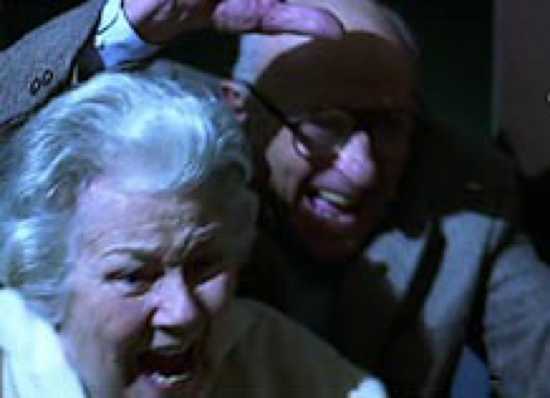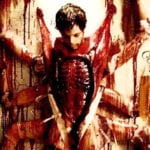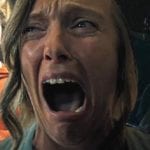 Politics
Politics  Politics
Politics  Weird Stuff
Weird Stuff 10 Eggs-traordinarily Odd Eggs
 History
History 10 Desperate Last Stands That Ended in Victory
 Animals
Animals Ten Times It Rained Animals (Yes, Animals)
 Mysteries
Mysteries 10 Devastating Missing Child Cases That Remain Unsolved
 Creepy
Creepy 10 Scary Tales from the Middle Ages That’ll Keep You up at Night
 Humans
Humans 10 One-of-a-kind People the World Said Goodbye to in July 2024
 Movies and TV
Movies and TV 10 Holiday Movies Released at Odd Times of the Year
 Politics
Politics 10 Countries Where Religion and Politics Are Inseparable
 Weird Stuff
Weird Stuff 10 Freaky Times When Famous Body Parts Were Stolen
 Politics
Politics The 10 Most Bizarre Presidential Elections in Human History
 Weird Stuff
Weird Stuff 10 Eggs-traordinarily Odd Eggs
 History
History 10 Desperate Last Stands That Ended in Victory
Who's Behind Listverse?

Jamie Frater
Head Editor
Jamie founded Listverse due to an insatiable desire to share fascinating, obscure, and bizarre facts. He has been a guest speaker on numerous national radio and television stations and is a five time published author.
More About Us Animals
Animals Ten Times It Rained Animals (Yes, Animals)
 Mysteries
Mysteries 10 Devastating Missing Child Cases That Remain Unsolved
 Creepy
Creepy 10 Scary Tales from the Middle Ages That’ll Keep You up at Night
 Humans
Humans 10 One-of-a-kind People the World Said Goodbye to in July 2024
 Movies and TV
Movies and TV 10 Holiday Movies Released at Odd Times of the Year
 Politics
Politics 10 Countries Where Religion and Politics Are Inseparable
 Weird Stuff
Weird Stuff 10 Freaky Times When Famous Body Parts Were Stolen
10 Frighteningly Disturbing Movie Scenes
Listverse offers a host of lists that refer to “most disturbing movies,” but this list is dedicated for specific scenes that viewed in and of themselves are disturbing to watch. This list does not claim to highlight the most gory or disgusting scenes (e.g. scatological terrors from 120 Days of Sodom), but rather, scenes that due to their content or taboo subject matter are the most psychologically disturbing. Not all films would be traditionally labeled “horror.” Though some directors have a host of disturbing movie moments, I have limited the list to only one film per director. Films are arranged in no particular order.
Please note:
1. The following list contains spoilers. Do not read if you do not wish to know plot details of these films.
2. Incase it wasn’t already obvious, video clips depict disturbing content, so watch with caution.
3. Movie lists are always subjective, so bear in mind that I claim no definitiveness to this list. Feel free to comment with your own selections.

Describing the plot of a David Lynch film is always a challenge, but loosely, Mulholland Drive follows the troubled romantic relationship of two actresses. In the final scene, Diane (Naomi Watts) is chased into her bedroom where she subsequently commits suicide by a menacing old couple for no apparent reason. The husband and wife, were introduced early in the movie as a happy and benevolent couple. The scene is disturbing for a variety of reasons. One: the old people enter her apartment as miniaturized versions climbing underneath her front door. They are clearly figments of her imagination, but are terrifying nonetheless. Two: the exaggerated expressions of the old people. They smile ghoulishly, reaching their arms out in a stereotypically menacing form and subsequently scare the shit out of Diane. Anyone who is familiar with David Lynch knows that his movies are full of weird-ass stuff, but this scene takes the cake. If you peruse the internet you will find a multitude of websites dedicated to analyzing his art, but regardless of any interpretations, it’s a freaky scene. The full scene is not currently available online.
In this class film by critically acclaimed Swedish director Ingmar Bergman, the character of Karin (Harriett Andersen) suffers from schizophrenia that leads her to believe that people are talking to her through the wall of her attic. She claims the people are awaiting the coming of God, who will enter through a closet door. The film gives hints as to the seriousness of Karin’s delusions, but it is not until this scene that the audience is able to see the full extent of her madness. In the jarring scene, Karin rushes upstairs to speak with the “voices,” who inform her that the time has come and that God is coming. As she waits, the vibrations of a nearby helicopter coming to the island to take her back to the mental hospital inadvertently causes the closet door to slowly swing open, seemingly of its own accord. Seen as a tangible confirmation of her beliefs, Karin waits with elation, but upon seeing what lies behind the door experiences a complete schizophrenic breakdown. What she sees or believes she sees is not revealed until later, but the realistic portrayal of schizophrenia, paired with Andersen’s stellar acting ability, make it a rather disturbing scene. The full clip is available above, but readers are encouraged to watch this fabulous film!
The Last House on the Left was recently (2009) remade, fitting with the current “torture porn” trend in Hollywood horror films. Yet this is one of the rare instances in which the original film by Wes Craven was actually more disturbing than the remake. The film follows two young women who are captured and tortured by a group of four criminals led by a sociopath named Krug (David Hess) who has recently broken out of prison. Banned at the time in several countries, the film is filled with blood and guts, including close-up shots of a disembowelment, but the scene I have chosen is the one I found the most psychologically disturbing. While the rest of his group holds her down, Krug carves his name into Mari’s (Sandra Cassel) chest, and then brutally rapes her. Following the rape, the group allows Mari to get up and put her clothes back on. Obviously traumatized and almost dysfunctional, Mari wanders despondently into a nearby river, where Krug shoots her in the head. There have been numerous films that have depicted rape scenes, but what makes this scene particularly disturbing is the attitudes of the group once the rape is completed. The audience observes in Krug a look of regret over his actions, suggesting that he is ashamed of his behavior but powerless to stop it. The only female in the group, a woman named Sadie, looks almost bored, and mechanically goes about trying to clean up after the rape. This is paired with a beautifully morose soundtrack sung by David A. Hess (who plays Krug himself), that seems wildly inappropriate given the context of what has just happened. The full film is available on YouTube at the above link, but this disturbing scene occurs around the 49 minute mark.
In this classic science fiction/horror film, Edward Jessup (William Hurt) is a university professor of abnormal psychology who is obsessed with other states of consciousness. Jessup travels to Mexico to participate in an indigenous psychedelic ceremony, and after tripping on an unknown substance takes a large amount back with him to the states for “formal research.” This scene is the second of Jessup’s “extreme trip” sequences, which occur while he tests the drug inside of a water oxygen-deprivation chamber. An attempt to describe this scene in detail would be pointless, but let’s just say there is a brief crucifixion sequence where a man’s head is replaced with that of a ram’s. Full scene above.
Casino, a classic film by an acclaimed director with a star-studded cast, is often mentioned in movie lists. Sam Rothstein (Robert De Niro) is a Jewish-American top gambling handicapper who is called by the mob to oversee the day-to-day operations at the Tangiers casino in Las Vegas. The mob also sends Nicky Santoro (Joe Pesci) to ensure that money from the Tangiers is skimmed off the top to profit the mob. Santoro proves over time to be a huge liability both to Rothstein and to the mob itself, and in typical Las Vegas fashion, Santoro and his brother are eventually taken to the desert and killed by mob bosses. Two things make this scene disturbing. One: up to this point Santoro had narrated the majority of the film, yet his narration is cut off mid-sentence when he is hit from behind with a shovel and then viciously beaten. This is surprising to the audience, as it contradicts the old-age assumption that any narrator, whether in movies or in print, must survive the story. The second reason it is a disturbing scene is the method used to kill Santoro and his brother. After being brutally beaten to the point of complete helplessness, the mob dumps their still living bodies to be buried alive in the Nevada desert. Though Pesci’s character was a nuisance, it is a tragic and violent end to a character who provided some comic relief for the film. Full scene above.
Creepshow, directed by George A. Romero, the famous director of the “Night of the Living Dead” films, collaborated with Stephen King on this anthology film, who even has a small (but comical!) role himself in the second sequence. The film presents five horror stories in a “comic book” type fashion, and though it is intentionally campy and melodramatic at times, it nevertheless contains some true horror. The (arguably) creepiest scene of the film is “Something to Tide You Over,” based on a short story written specifically for the film by King. In this sequence, Richard Vickers (Leslie Nielson) exacts a cold and calculated revenge against a man named Harry Wentworth (Ted Danson), who has been carrying on an affair with Richard’s wife. Richard drives Harry to a nearby beach, claiming that he has captured Becky (Richard’s wife) and that she is in serious danger. Once they arrive, there is no sign of Becky, but Richard goads Harry into burying himself up to the neck in the sand with the promise that once he does this he will get to see Becky. True to his word, once Harry is completely trapped, Richard reveals to him a live-streaming video screen, with which Harry sees that Becky is also buried up to her neck in sand and is able to watch him on a similar video screen. Trapped and total immobile, Richard calmly informs Harry that the rising tide will soon drown him, and then leaves.
For any viewer (like myself) who is in the habit of imagining themselves subject to the experiences of the people in films, this was a particularly horrifying scene to watch, as the slow reveal of the plan makes it that much more frightening. It is also disturbing to see Leslie Nielson, a man famous for his comedy performances (e.g. Airplane, Naked Gun) take on a role as a sadistic killer. I first saw this film about ten years ago and this scene has stuck with me since then as a particularly unfortunate way to die. Though the full scene is not available, you can watch a short clip from the sequence above.
Though the notorious film, The Human Centipede, is perhaps lacking in the artistic quality of the other film’s on this list, it would seem a gross miscarriage of justice to not give it a mention, as “disturbing” is pretty much the only way to describe it. Directed by Tom Six with the deliberate intention of creating a film so over-the-top and grotesquely shocking, the film succeeds with its premise alone. For anyone not familiar with the plot, an insane German doctor develops an obsession with the idea of creating a “human centipede,” by literally stitching humans together, asshole to mouth, which he successfully achieves after kidnapping three incredibly unlucky victims. The implications of this surgery in terms of the digestive tract are obvious but are too gross to detail here, so I will leave it up to your imaginations. Surprisingly, but perhaps due to its already profoundly disturbing content, viewers have noted that the film itself is not particularly gory or bloody (the same could not be said for the abomination that is The Human Centipede 2: Full Sequence), but rather uses camera tricks and subtleties to show the “centipede” post-op. In light of this, I have chosen as the most “disturbing scene” from this film as the one where the doctor slowly and methodically explains to the three victims what he is about to do to them, complete with visual diagrams and a professional presentation. Needless to say, the victims are not excited. Trailer above.
I hesitated to include Clockwork in this list simply because it is so obvious a choice, but in truly thinking about it, it has earned its reputation. A Clockwork Orange depicts a futuristic London where youth gangs run rampant and law and order have come to a virtual halt. The film focuses on a youth named Alex De Large, who is the leader of a gang of four whose regular nightly activity consists of terrorizing the public as much as possible. The scene most often referenced, which I give credence to here, involves Alex and his gang breaking into the house of a middle-aged couple, for no reason but to cause general mayhem. Alex severely beats the man while singing and dancing to the classic “Singin’ in the Rain,” and then brutally rapes the man’s wife while he watches, which later results in her death. The scene is remembered for it’s over the top violence, and its use of what had been to that point a classic, innocent song that has been steeped in more sinister connotations ever since. What is most disturbing about this scene is the utter joy with which Alex and his friends go about their task, and the contrast of this joy with the abject terror of their victims. Despite the large numbers of “criminals,” we have in our modern prisons, as a whole as a society we generally draw the line between crimes that are done for necessity (robbery) and those that are done purely for the joy of it. It is for this reason that this scene is so jarring – the horrifying violence and rape are just seen by Alex and his group as a typical nightly outing.
In the academic world, Deliverance is often viewed as a subtle critique of the introduction of unwanted industrialization to the rural South, yet for the majority of men, it is remembered for an entirely different reason. The plot follows four Atlanta businessmen who decide to take a leisurely canoe trip into the remote Georgia wilderness. Expecting fun and adventure, they are instead met with hostile, inbred hillbillies who do not welcome the invasion of their territory and do not appreciate the men’s condescension towards them. In an infamous scene that qualified the film for this list, a hillbilly forces Bobby (Ned Beatty) to strip in the woods, then humiliates and brutally sodomizes while instructing him to “squeal like a pig.” Though female rape has been depicted countless times in film, the inclusion of a male rape scene was far more shocking and a more “taboo” subject, as male rape and homosexuality in general have long held an even greater societal stigma. Thus, this is a scene that has made males squirm ever since the film first came out, and is one of the main reasons why the film is remembered today. The scene is also memorable for John Voight’s rather blasé reaction to the rape, which adds an element of comic relief.
The Texas Chainsaw Massacre, with its countless sequels, prequels, and remakes, is a well-known staple of the horror genre, yet most films never top their original. The modern TCM movies generally revolve around blood and guts, and while the original had some of that too (but to a lesser extent), the first “kill” is a classic example of how subtlety can be more effective than gore. Kirk, one of five hapless teenagers whose car breaks down on a road trip, is the first one to be killed by the infamous “Leatherface.” Wandering into the home in search of help or a phone, he notices an open door at the end of a hall that reveals a red wall studded with what appear to be bones and other ritualistic objects. Kirk, overcome with curiosity, continues through the hallway, where suddenly Leatherface appears, slamming him in the side of the head with a mallet. Kirk is reduced to a quivering/twitching mass on the floor, and he is dragged into the red room by Leatherface, who slams the door abruptly behind him. We never see Kirk again.
This scene works on a psychological level. First of all, its suddenness catches the viewer off guard. While anyone watching a movie called the “Texas Chainsaw Massacre” of course realizes there will be violence, Leatherface’s entrance is so abrupt it is truly frightening. Secondly, the scene works because it doesn’t show us exactly what happens, leaving our minds to do the rest of the work. Unimaginable horrors lie behind the locked door, and we are easily convinced that Kirk’s fate is pretty much the worst thing that could ever happen to you from walking into a stranger’s house. These features as a whole make it a memorable scene. Full video above.
![Top 10 Most Important Nude Scenes In Movie History [Videos] Top 10 Most Important Nude Scenes In Movie History [Videos]](https://listverse.com/wp-content/uploads/2019/09/sharonstone-150x150.jpg)







